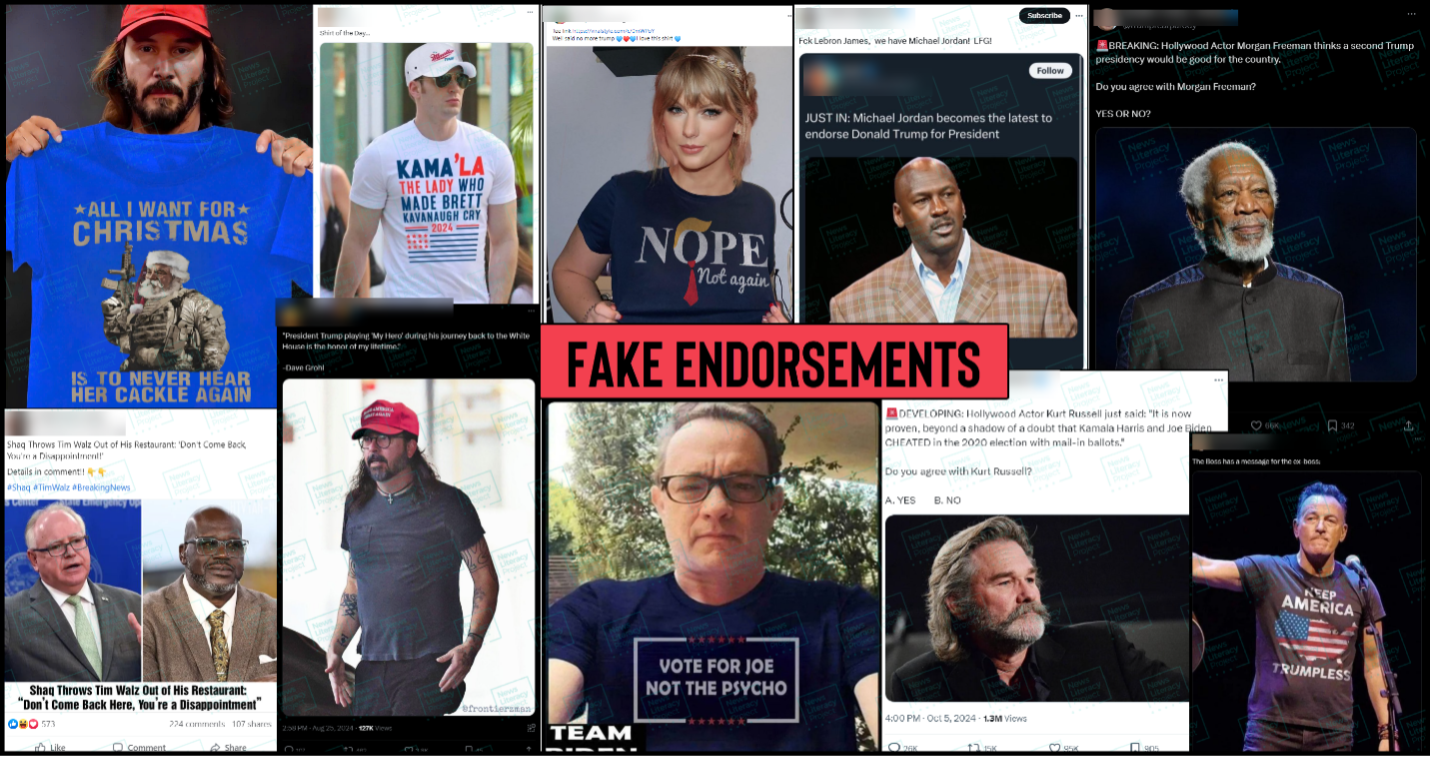News literacy takeaways from the Misinformation Dashboard: Election 2024


When the News Literacy Project launched the Misinformation Dashboard: Election 2024 last summer, the goal was to collect and track viral falsehoods to help people understand how they develop, and the narratives they attempt to create. With the presidential contest over, it’s time to end the work and review the news literacy lessons it provided.
Lies travel faster than the truth
Misinformation spreads in different ways. A genuine photograph removed from its original context, a manipulated image, or a picture generated with artificial intelligence can all be used on social media as “evidence” for a false claim. But after examining 941 pieces of false content, we found that misinformation spreaders eschew the need to offer any evidence at all. They just simply lie. We catalogued 147 viral falsehoods pushed using this “sheer assertion” tactic — making it the most popular of any we tracked.
AI still looms as a threat


One of unknowns that misinformation researchers faced at the start of election season was how artificial intelligence technologies would impact the information landscape. We certainly tracked falsehoods that were created with AI tools – including videos altered with fabricated voice clones, deepfakes that altered people’s facial movements, and images that looked like photos but were entirely fabricated – but AI-generated content wasn’t as widespread as expected. Only 6% of the 941 examples in the database involved its use.
Even fake popularity matters
Posts that exaggerate a candidate’s popularity made up a surprisingly large number of entries in the dashboard, accounting for nearly 20% of all false claims. Some involved the misrepresentation of crowd size, while others focused on endorsements (or disavowals) of celebrities. Musician Taylor Swift was the most frequently targeted celebrity, but creators of political disinformation also misleadingly cited other public figures and celebrities, such as Keanu Reeves, Michael Jordan, Elton John, Ryan Reynolds and Morgan Freeman.


Fitness for office falsehoods grew
The most common narrative pushed by misinformation accounts during election season focused on the fitness of candidates for the presidency. These claims attacked both candidates and President Joe Biden from a variety of angles, including painting them as not smart enough, too old or even too intoxicated to perform the job.
News literacy skills make the difference
One thing all the election misinformation collected in the dashboard has in common: It can be easily debunked, using basic news literacy skills and habits. For example:
Dismissing sensational, evidence-free claims or checking them against high-quality, standards-based sources defuses sheer assertion claims. Reverse image searches put old or manipulated photographs back into their original context. “Lateral reading” (or a quick search for more information from other sources) uncovers credible information to dispel popular but false narratives. And slowing down helps prevent being misled by emotions and vulnerability to confirmation bias.
Falsehoods, of course, persist beyond the election. The misinformation dashboard will continue to be available as an archive. And NLP’s RumorGuard®, which debunks the latest examples of online misinformation, will continue.

